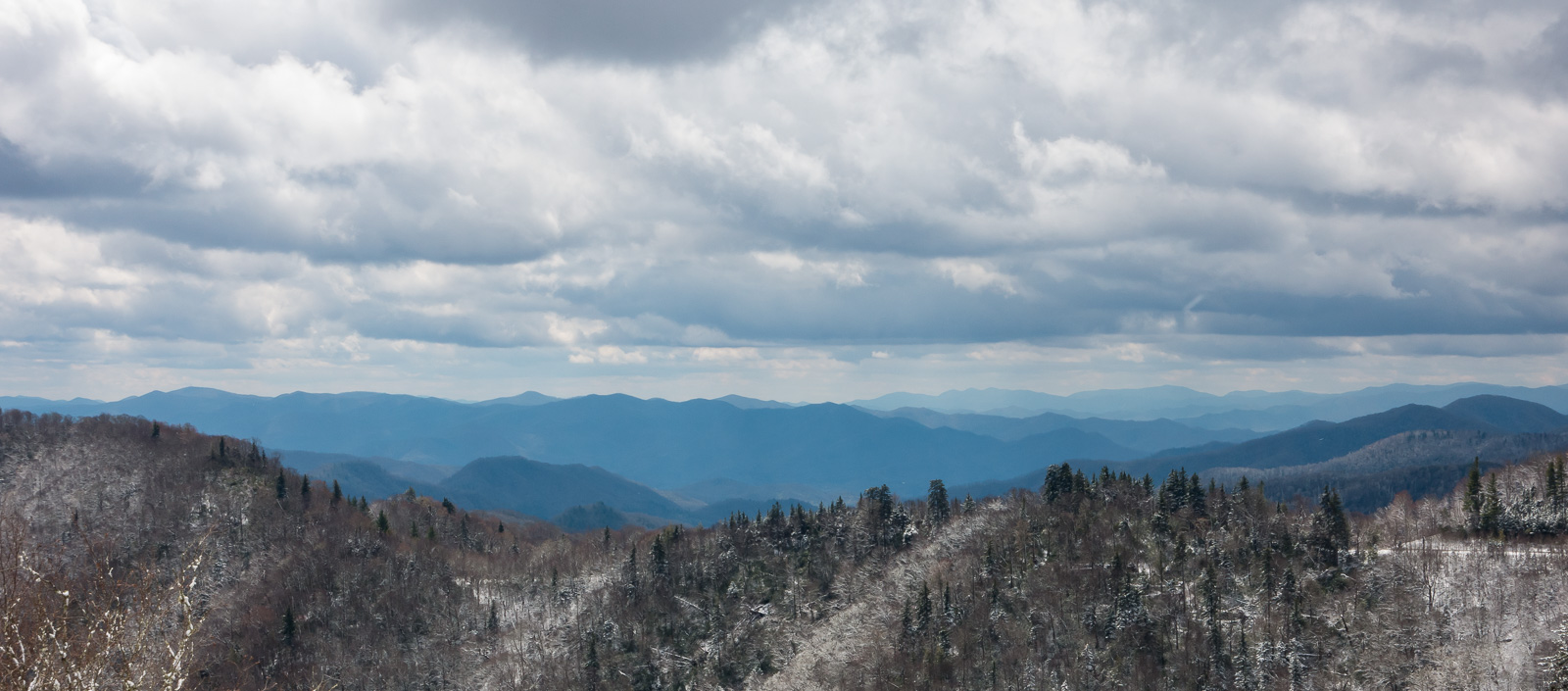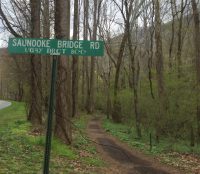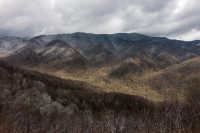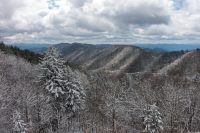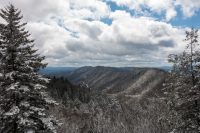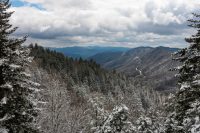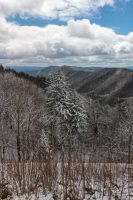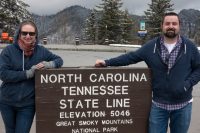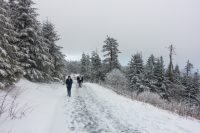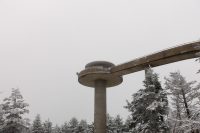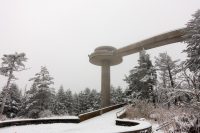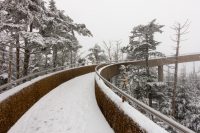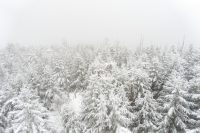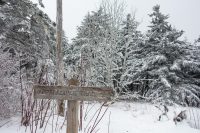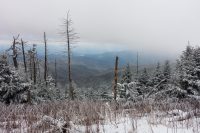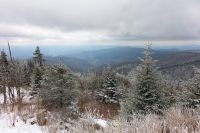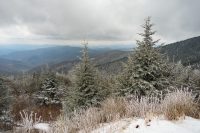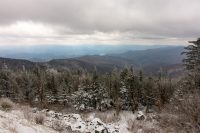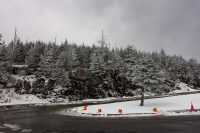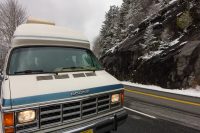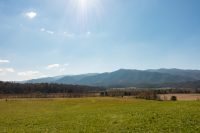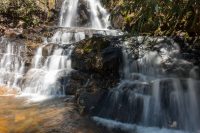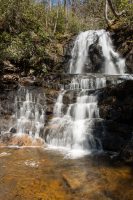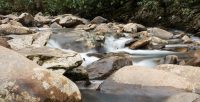April 7 – 9, 2016: When we departed Asheville we headed towards the southern entrance of Great Smoky Mountains National Park (also a World Heritage Site and International Biosphere Reserve) despite a weather forecast that potentially included snow.
We arrived in the park vicinity without encountering snow and stayed just outside the park in Cherokee, North Carolina for one night. Cherokee is located within the Qualla Boundary land trust and you’ll find that the street signs are written in both English and Cherokee syllabary.
The next day we headed into the park and stopped at the Oconaluftee Visitor Center where we learned that weather in the park did include snow at higher elevations and the road to Clingmans Dome, the highest elevation in the park – 6,643 feet – and the highest point on the Appalachian Trial, was currently closed to weather conditions. We were disappointed but because there was no telling when the road might open we decided to start exploring the rest of the park. We found the park to be more congested than we’re used to but Great Smoky Mountains is the most visited National Park (over 9 million visits per year) with many visitors enjoying an auto-tour of the main north-south route (441) through the park. As we ascended the snow on the treetops and ground made for some really interesting views and juxtaposition with the color palette down below.
Our first stop was at Newfound Gap, a viewpoint bustling with people. Here we found beautiful vistas, a snowman, and the North Carolina-Tennessee border.
Newfound Gap is just past the road leading to Clingmans Dome and, as we passed, we noticed the road closure gates were up! Sure enough, in the few hours since we departed the Oconaluftee Visitor Center, the National Park Service opened the road. We decided to try our luck and head up the twisty turny road to the top. We figured we’d turn back if we found the roads snow covered and Camper Dan revolted (he’s not a fan of the snow; as we discovered when we were in Bryce Canyon National Park on the last road trip). But, Camper Dan held strong and we made it to the top. We then walked up a steep icy path for .5 miles to our final Clingmans Dome destination.
This unique observation tower was built to allow visitors to get above the tree line. Whilst our view wasn’t the initially anticipated one, we had a unique experience and are grateful that the road opened just in time.
From Clingmans Dome we continued north through the park, descending in elevation, and enjoyed the views and babbling stream that ran beside the road for much of the journey. We overnighted at a campsite in the Cades Cove area of Great Smoky Mountains National Park. Despite the rest of the park being busy (by my standards) the campground was pretty deserted. We got a fire going, cooked some sausage for our tortellini, and enjoyed a three course meal complete with s’mores.
Our last day in the park we drove the popular eleven mile Cades Cove one-way scenic loop. We were prepared to see some wildlife but to no avail. However, on our way out of the park, after completing the popular Laurel Falls hike (a 1.3 mile one-way hike up to a busy waterfall), we saw a large black bear from afar! The bear was lumbering around on a hillside across the road. With the bear sighted, we could leave the park.
Before I sign off, I must rant a bit. Great Smoky Mountains National Park is the most visited National Park. It seems the most popular activity is driving large, gas-guzzling, emissions-omitting vehicles through the park. There are major thoroughfares and popular driving loops. It’s no surprise that the park has the highest level of pollution of any National Park. There are signs posted that read “Be My Idol, Don’t Idle”. Catchy but nobody seems to heed the recommendation. The park is also the only National Park that does not charge an entrance fee. I don’t know why. Might I suggest that the park charges an entrance fee. Use the money to purchase electric vehicles to shuffle the tourists around to those popular viewing spots. Zion National Park requires use of the shuttles during peak season. Let’s implement the same in Great Smoky Mountains National Park and do our part to save our planet. P.S. I realize Camper Dan is not a model citizen when it comes to being green but we’d use the shuttle! We also try to do our part in other ways, which leads to another rant: Many of the campgrounds we stay at don’t have recycling! What year is it people?! We tote our garbage around until we find a recycling station. End rant.
Accommodation:
- Cherokee / Great Smokies KOA, Cherokee, North Carolina, United States
- Cades Cove Campground, Great Smoky Mountains National Park, Tennessee, United States
TIP: If camping isn’t your style, check out these accommodation options in the Great Smoky Mountains National Park region.
